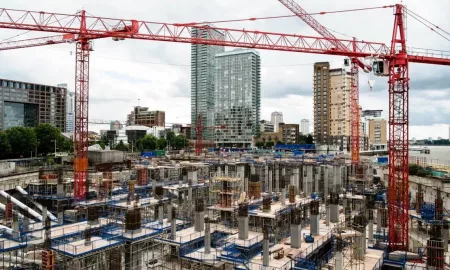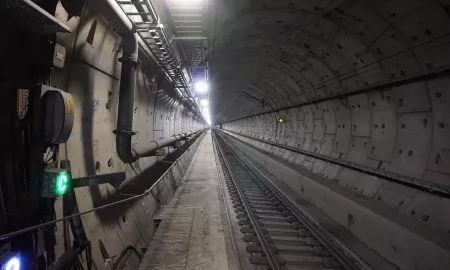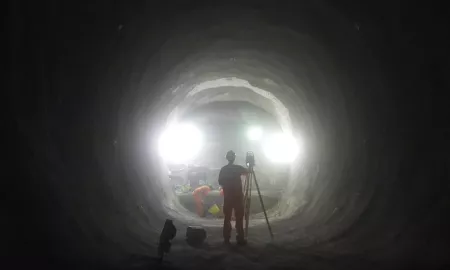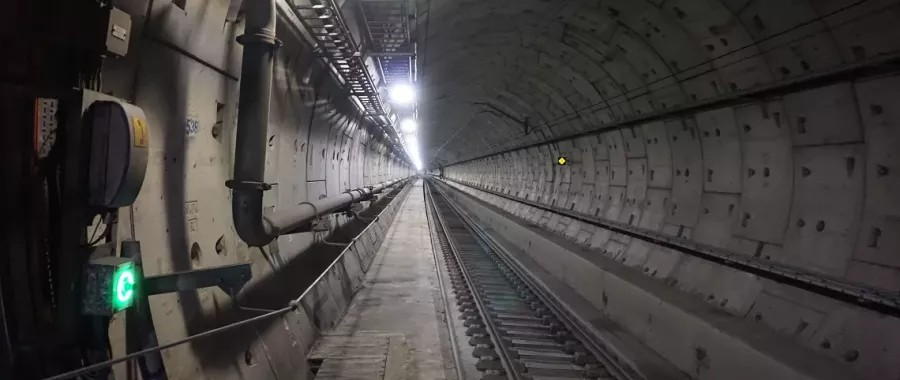There are risks involved in any tunnelling project. One significant risk – the uncertainty of the ground’s behaviour and the impact this has on existing infrastructure – can be greatly reduced through geotechnical and structural monitoring.

Having a clear understanding of how the geotechnical conditions will behave allows contractors to make informed decisions about the impact to construction works, and therefore allow for adjustments to be made to minimise any risk to people, existing structures and the project’s budget and timescale.
Justin Roffey, operations director at SOCOTEC Monitoring - formerly ITM Monitoring – believes that taking a proactive approach to mitigating risk in tunnelling projects is crucial and below explains some of the risks involved, and how monitoring can help to minimise them.
When tunnelling goes wrong
In 1994, during the construction of the £500m Heathrow Express line between Paddington and the airport, substandard construction, inadequate repairs and the construction of another tunnel in failing ground led to one of the worst civil engineering disasters in Britain, as reported by The Guardian. These events, alongside the omittance of a suitable monitoring system, resulted in mass tunnel collapses over a period of three days, which caused extensive damage to buildings and infrastructure, as well as putting workers and the general public at severe risk.
In the above-mentioned case, thankfully construction workers escaped uninjured, but the principal contractor was fined £1.2m for a mistake which could have been avoided with the correct monitoring systems in place. A proactive risk management process is critical to avoid such costly consequences, and understanding the geology of a site is an important first step.
Understanding the geology
When excavating a tunnel, stresses are introduced to geology which may have remained happily undisturbed for millions of years. Before tunnelling works begin, contactors need to understand the composition of the soil and rock in order to predict how the ground above and adjacent to the site is likely to behave.
SOCOTEC Monitoring carries out a large amount of its work in London. Despite being one of the most geologically investigated areas due to the amount of existing infrastructure, construction works in London continue to reveal unexpected ground conditions. This is because London’s geology is complex, with several layers of strata present across and beneath the area. Tunnelling in London could involve passing through five or six different strata, all of which must be matched with the correct tunnelling techniques. Failure to match these techniques to ground composition could reduce tunnelling advance rates, jeopardise worker safety and negatively impact project timescales and costs.
Once the designer knows the tunnel alignment, ground condition assessments are carried out to understand the geology of the site, indicating the strength of the soil and identifying areas where the geology changes. The results of these investigations inform the tunnelling technique and ensure that the correct machinery and pressures have been selected to balance the geology through which the tunnel will be constructed.
Many tunnelling projects now involve lifting precast concrete segments in behind the tunnel boring machine, reducing the chance of collapse inside the tunnel. Often, however, pilot holes are drilled ahead of the tunnel boring machine to investigate an area of geology which may be of concern. As the tunnel advances, piezometers can be used to detect an increase or decrease in the pore water pressure, as well as monitoring for any seasonal change in water levels. Having this information about areas ahead of the tunnelling works allows adjustments to be made to the rate of advancement until competent material is reached.
Baseline monitoring is carried out in several stages to define the existing behaviour of geotechnical assets in the zone of influence, prior to commencement of intrusive works. This allows improvements to be identified during construction and alterations to be made in order to enhance operational delivery.
Safeguarding existing infrastructure and people
As well as understanding how the ground will behave during excavation, because many tunnelling projects take place in densely populated urban environments, it’s important to know how existing structures and utilities located above and around the tunnelling site may be impacted in order to minimise risk to people and infrastructure.
As a tunnel boring machine advances, pressure builds up ahead of it, elevating the surrounding ground and consequently any buildings above the tunnelling site. Extensometers are used to measure vertical displacement and in urban environments prisms or levelling systems are also installed on buildings in order to detect and measure additional displacement as a result of the works.
When undertaking tunnelling projects in London in particular, there are many heritage buildings which need consideration. These old buildings have diverse foundations and information relating to their construction is limited, so anticipating how they are likely to behave during tunnelling works is not possible. In addition, the cost of any repairs is far higher for heritage buildings, as they may require specific materials and methods to maintain integrity.
In comparison, in a modern city – such as Chicago – most of the skyscrapers downtown are relatively new, at most 20 years old, so records of construction methods are available. This will only improve as BIM becomes more widely used but, even so, monitoring systems should still be a requirement to ensure that acceptable levels of movement are not exceeded during any tunnelling works.
Minimising reputational risk
On occasion, despite having suitable monitoring systems in place, tunnelling works are temporarily halted to avoid unnecessary risk, as well as to protect the reputation of those companies carrying out the works.
For example, one recent tunnelling project beneath the streets of London was taking place during a major sporting event. As the excavation advanced towards a busy rail station, it was deemed that the schedule for tunnelling under the station was too risky as it was one of the main arrival routes for spectators. On this occasion, the tunnel advancement was put on hold until the event was over.
Tunnelling works are always high profile, so if the hold had not been enforced and there had been any related issues, significant disruption to the event would have occurred as well as the generation of negative publicity, regardless of whether the tunnelling contractor was at fault.
Of course, understanding the behaviour of the ground and existing structures during excavation and construction works is only part of the requirement. Once the tunnelling project is completed, instrumentation is often installed inside or behind the tunnel lining in order to monitor an asset throughout its lifecycle.
In summary
A key part of mitigating the risk in tunnelling projects through monitoring comes down to planning - planning the route, understanding the geology, assessing the assets along the tunnel, knowing how any existing buildings are likely to behave, etc. Geotechnical and structural monitoring is vital to the understanding of these factors, and can help contractors model possible outcomes in advance of the works.
The data gathered through monitoring allows construction teams to make informed decisions about the project as they are able to anticipate the behaviour of the ground and surrounding infrastructure before, during and after works are completed. This knowledge aids selection of the most appropriate tunnelling techniques, alters progression rates, mitigates existing risk to people, assets, budgets and timescale and helps to evaluate potential new risks before they become reality.
Do you have a tunnelling project that you wish to discuss?
Get in touch with the SOCOTEC Monitoring team.

You might also like







Add new comment